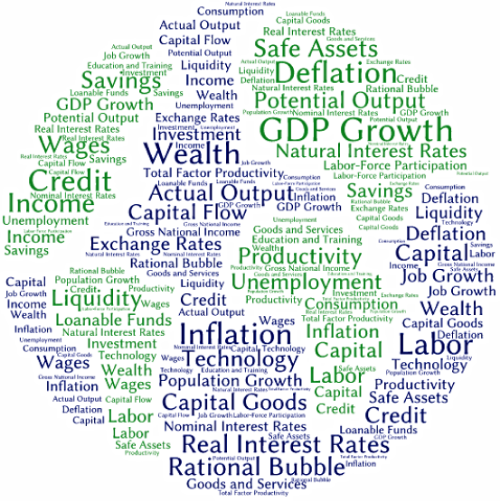“In the work of the scientist, formulating the problem may be the better part of the discovery, the solution often needs less insight and originality than the formulation.”
Quantitative and fundamental analyses were thought to be mutually exclusive. However, since 2012 there is a new breed of models and strategies emerging that goes by the name “Quantamental.” When an investment manager has fundamental conviction on a security and quantitative models agree, the subsequent performance is superior to either discipline alone. The reason why combining these two approaches increases overall risk-adjusted return is that there is generally low correlation of returns between fundamental strategies and quantitative strategies.
Originally used for stock valuation, both quantitative and fundamental analysts basically share the same underlying factors such as company financials, price/earnings ratios, credit ratings, and measures of market sentiments. That is the reason why these two distinct analytical styles can be combined together. But what does the world of capital flow, interest rates, and exchange rates look like from the vantage point of a 'quantitative + fundamental' currency trader or a central banker?
How does one map the "Quantamental World" of capital flow, interest and exchange rates?
Modern macroeconomic models are designed to be mathematical formalization of the entire economy. This ambitious approach could be frustrating for many outside the field of econometrics. Many economists prefer verbal intuitions as a way to convey understanding. Verbal intuition can be helpful in understanding bits and pieces of macro models. However, it is almost always misleading about how they fit together. It is exactly the imprecision and incompleteness of verbal intuition that forces macroeconomists to include the entire economy in their models.
We anticipate a trend toward quantamental trading among institutional currency traders. Quantitative macroeconomic models driven by real-world databases shall have an important role to play in every quantamental trader's toolkit. After all, there is a strong need to understand the greater macroeconomic context of exchange rate movements, given the unusual exchange rates volatility of recent months. If anyone has one to recommend, we certainly would love to hear about it!
“An economist is a man who, when he finds something works in practice, wonders if it works in theory.”
References:
- Galı´, Jordi and Gertler, Mark (2007). Macroeconomic Modeling for Monetary Policy Evaluation. Journal of Economic Perspectives, Vol. 21, No. 4, pp. 25-45. Retrieved from: http://www.econ.nyu.edu/user/gertlerm/jep.21.4.pdf
- Smets, Frank and Wouters, Rafael (2007, February). Shocks and Frictions in US Business Cycles: A Bayesian DSGE Approach. European Central Bank, Working Paper Series, No. 722. Retrieved from: https://www.ecb.europa.eu/pub/pdf/scpwps/ecbwp722.pdf
- Hara, Maoko and Ichiue, Hibiki and Nakamura, Koji and Shirota, Toyoichiro (2009). Practical Use of Macroeconomic Models at Central Banks. Bank of Japan Review, 2009-E-1. Retrieved from: https://www.boj.or.jp/en/research/wps_rev/rev_2009/data/rev09e01.pdf
- Kocherlakota, Narayana (2010, May). Modern Macroeconomic Models as Tools for Economic Policy. Federal Reserve Bank of Minneapolis, 2009 Annual Report Essay. Retrieved from: https://www.minneapolisfed.org/publications/the-region/modern-macroeconomic-models-as-tools-for-economic-policy
- Amisano, Gianni and Geweke, John (2013, April). Prediction Using Several Macroeconomic Models. European Central Bank, Working Paper Series, No. 1537. Retrieved from: https://www.ecb.europa.eu/pub/pdf/scpwps/ecbwp1537.pdf
- Wieland, Volker, and Cwik, Tobias and Müller, Gernot J. and Schmidt, Sebastian and Wolters, Mark (2012). A New Comparative Approach to Macroeconomic Modeling and Policy Analysis. Journal of Economic Behavior and Organization, August 2012, Vol. 83, 523-541. Retrieved from: http://www.macromodelbase.com/system/files/upload/Wielandetal_120123_0.pdf
- Whitehouse, Mark (2010, November 30). Economists’ Grail: A Post-Crash Model. Wall Street Journal. Retrieved from: http://www.wsj.com/articles/SB10001424052702303891804575576523458637864
- Eggertsson, Gauti and Mehrotra, Neil (2014, October). A Model of Secular Stagnation. NBER Working Paper 20574. Retrieved from: http://www.nber.org/papers/w20574.pdf
- Williams, John C. (2014, January 16). Monetary Policy at the Zero Lower Bound: Putting Theory into Practice. Brookings Institution. Retrieved from: http://www.brookings.edu/~/media/research/files/papers/2014/01/16-monetary-policy-zero-lower-bound/16-monetary-policy-zero-lower-bound-williams.pdf

